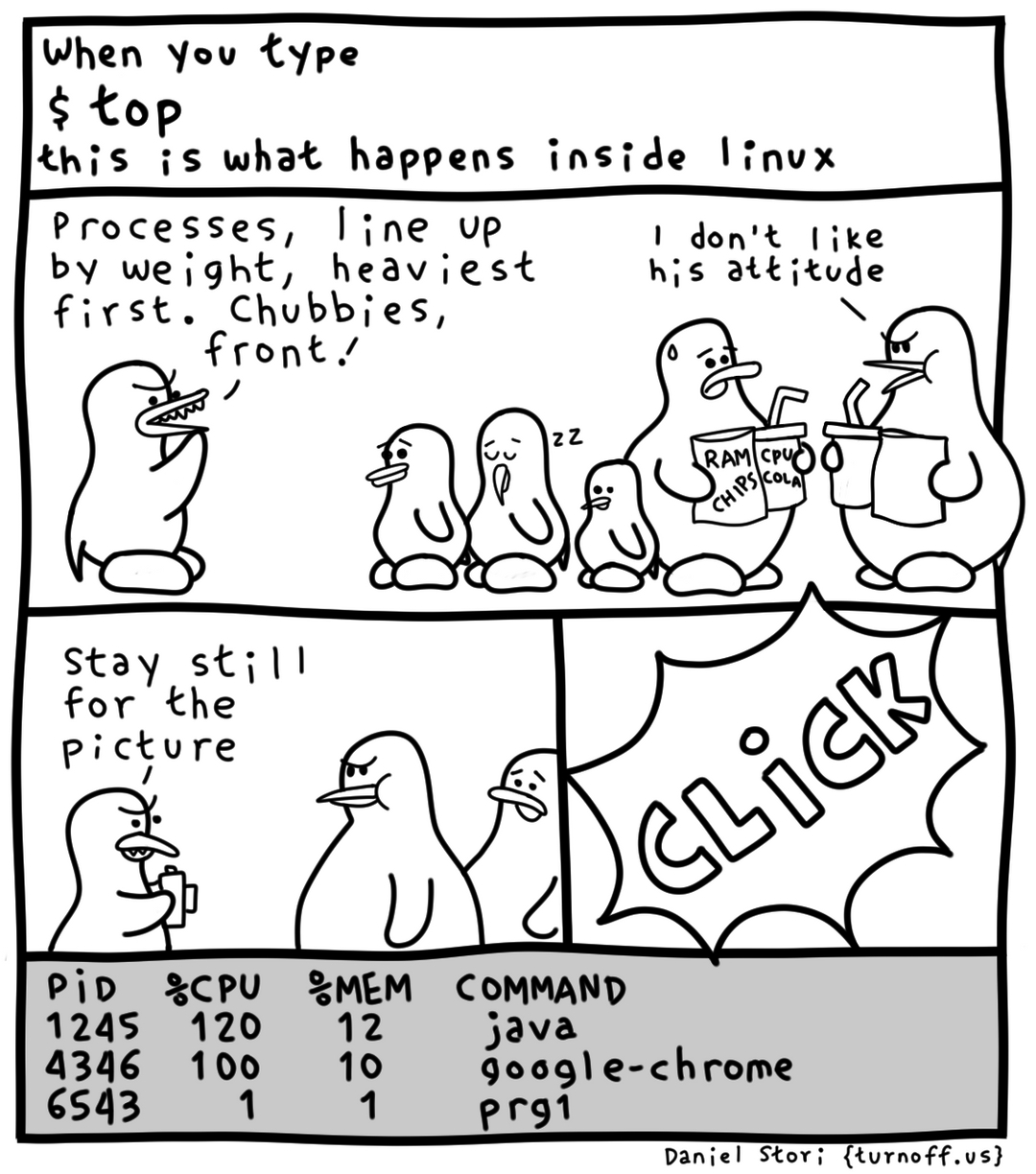this post was submitted on 16 Feb 2024
995 points (99.3% liked)
linuxmemes
20880 readers
9 users here now
I use Arch btw
Sister communities:
- LemmyMemes: Memes
- LemmyShitpost: Anything and everything goes.
- RISA: Star Trek memes and shitposts
Community rules
- Follow the site-wide rules and code of conduct
- Be civil
- Post Linux-related content
- No recent reposts
Please report posts and comments that break these rules!
founded 1 year ago
MODERATORS
you are viewing a single comment's thread
view the rest of the comments
view the rest of the comments

Timer based interrupts are the foundation of pre-emptive multitasking operating systems.
You set up a timer to run every N milliseconds and generate an interrupt. The interrupt handler, the scheduler, decides what process will run during the next time slice (the time between these interrupts), and handles the task of saving the current process' state and restoring the next process' state.
To do that it saves all the CPU registers (incl stack pointer, instruction pointer, etc), updates the state of the process (runnable, running, blocked), and restores the registers for the next process, changes it's state to running, then exits and the CPU resumes where the next process left off last time it was in a running state.
While it does that switcheroo, it can add how long the previous process was running.
The other thing that can cause a process to change state is when it asks for a resource that will take a while to access. Like waiting for keyboard input. Or reading from the disk. Or waiting for a tcp connection. Long and short of it is the kernel puts the process in a blocked state and waits for the appropriate I/O interrupt to put the process in a runnable state.
Or something along those lines. It's been ages since I took an OS class and maybe I don't have the details perfect but hopefully that gives you the gist of it.
as a non computer scientist who is programming multitasking applications, you did a good job at explaining context switching :)
I think a lot of modern kernels are “tickless” - they don’t use a timeslice timer, and only context switch on IO interrupt, process yield, or when timeouts are specifically requested (including capping cpu-bound processes). https://en.m.wikipedia.org/wiki/Tickless_kernel
Tickless means it’s not based on the computer frequency and idle CPUs can stay idle rather than being annoyingly brought into high power mode ever 100 Hz, but it’s still firing interrupts based on scaling timed variables.
They’re now called “Dynticks”
SUSE wrote the vaguely more understandable write up that Linux foundation links to: https://www.suse.com/c/cpu-isolation-full-dynticks-part2/
BTW, the Linux RCU code is evil but interesting: https://www.p99conf.io/session/how-to-avoid-learning-the-linux-kernel-memory-model/
Fascinating stuff. Obviously a lot has changed since I took an undergrad OS class lol. Hell, Linux didn't even exist back then.
Oh, because its* a pointer to state-change. Good catch!